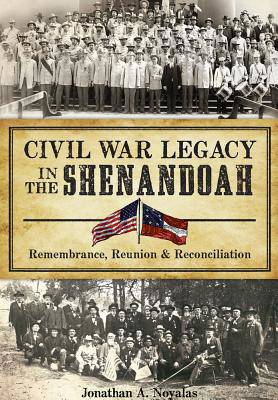
- Afhalen na 1 uur in een winkel met voorraad
- Gratis thuislevering in België vanaf € 30
- Ruim aanbod met 7 miljoen producten
- Afhalen na 1 uur in een winkel met voorraad
- Gratis thuislevering in België vanaf € 30
- Ruim aanbod met 7 miljoen producten
Zoeken
€ 30,95
+ 61 punten
Omschrijving
After four bloody years of Civil War battles in the Shenandoah Valley, the region's inhabitants needed to muster the strength to recover, rebuild and reconcile. Most residents had supported the Confederate cause, and in order to heal the deep wounds of war, they would need to resolve differences with Union veterans. Union veterans memorialized their service. Confederate veterans agreed to forgive but not forget. And each side was key to the rebuilding effort. The battlefields of the Shenandoah, where men sacrificed their lives, became places for veterans to find common ground and healing through remembrance. Civil War historian and professor Jonathan A. Noyalas examines the evolution of attitudes among former soldiers as the Shenandoah Valley sought to find its place in the aftermath of national tragedy.
Specificaties
Betrokkenen
- Auteur(s):
- Uitgeverij:
Inhoud
- Aantal bladzijden:
- 192
- Taal:
- Engels
- Reeks:
Eigenschappen
- Productcode (EAN):
- 9781626198883
- Verschijningsdatum:
- 25/05/2015
- Uitvoering:
- Paperback
- Formaat:
- Trade paperback (VS)
- Afmetingen:
- 150 mm x 226 mm
- Gewicht:
- 408 g

Alleen bij Standaard Boekhandel
+ 61 punten op je klantenkaart van Standaard Boekhandel
Beoordelingen
We publiceren alleen reviews die voldoen aan de voorwaarden voor reviews. Bekijk onze voorwaarden voor reviews.








